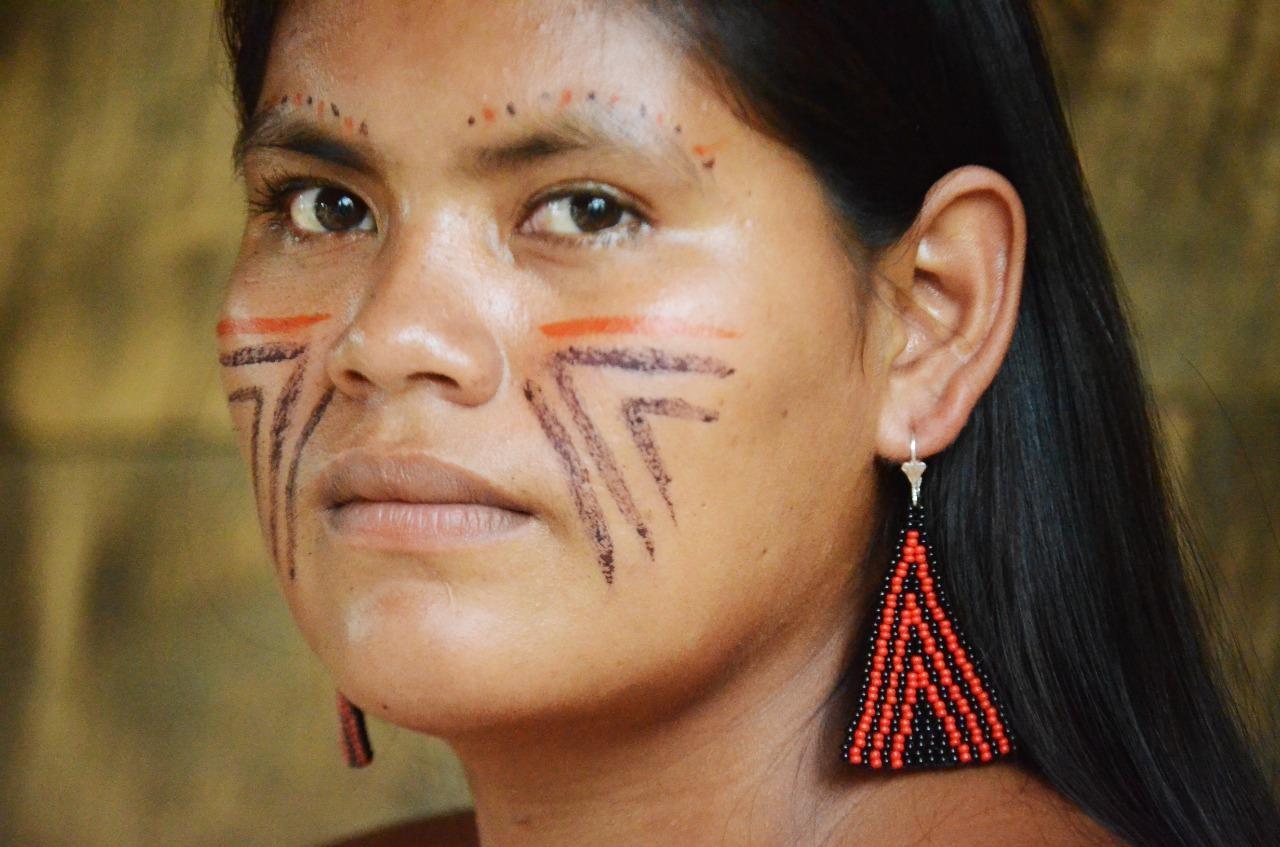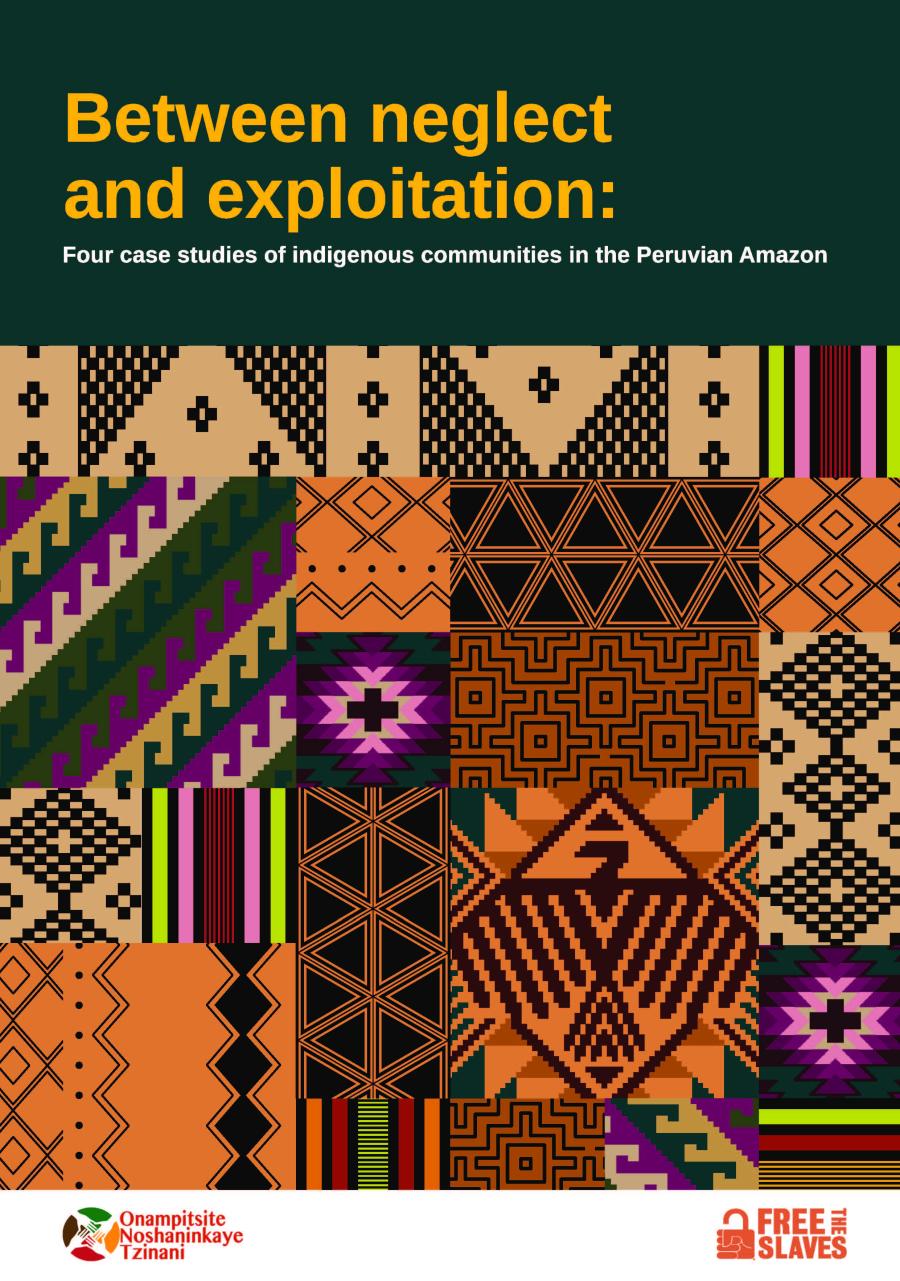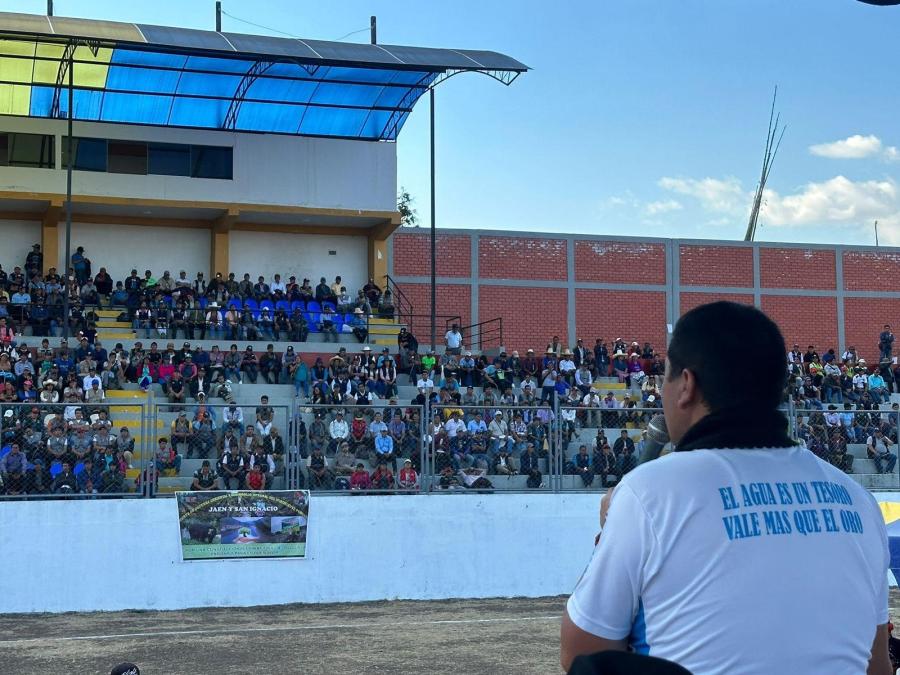
Mayra Cortez Calancha (Quechua), 28, is a visual artist, designer, and illustrator from Cusco, Peru. Since she was a child, she was immersed in the world of art, cinema, music, and culture, which allowed her to discover her roots. Through creativity and research, she uses art and painting as media to transmit deeper messages. She was awarded a Cultural Survival Indigenous Youth Fellowship in 2022. Her fellowship project titled, “Tejemos para no olvidar: Manos, Mujer y Memoria” (We Weave to Not Forget, Hands, Women, and Memory) focuses on the art of Harakbut weaving in the Indigenous community of Shintuya - Madre de Dios, Peru. Its objective is to delve into the cultural meaning of the art form via embroidery workshops with women and community leaders.
Through jewelry embroidery workshops, Cortez has succeeded at infusing each piece with unique content related to the identity of the embroiderer and the jewel itself. Her goal is to raise awareness and rescue the wisdom and knowledge of the Amazon communities. She says that the basis of this project is the revitalization of traditional myths : “I went for mythology because it is connected with oral traditions, and this is the original channel in how knowledge has been transmitted since the beginning of time. Mythology was created to teach future generations and support the worldviews of Amazonian, Andean, and Indigenous Peoples. Mythology speaks of the anthropogenesis of man from the beginning of time to the present, but the iconographic and symbolic part still needs to be explored.”
In the Harakbut tradition, much time is devoted to iconography and symbols, and each one has its own interpretation. Cortez comments, “It is their form of language with nature, that wisdom is something that the wise and Elders have [possessed]. Where do we get identity from? From everything you have, and have always had, but have not stopped to contemplate.” As a fellow, she has carried out an artistic process that has created a sense of belonging. She has learned about aesthetics and iconography, where her expressions and knowledge of traditional weaving have changed.

Mateo Jicca
Mateo Jicca, a teacher and knowledge holder, shares his wisdom about Harakbut aesthetics and art: "There is a very strong teaching in Harakbut that you have to be generous and kind; it is the first thing you are taught. We have to respect everyone—the animals, the forests, the wind, people—everything.” Many of the participants in the workshops did not know the symbols, but thanks to Jicca, they learned. “Mateo looked back on what his parents, grandparents, and the wise people of the community did, and we benefited from his knowledge,” says Cortez.

Mariana Shimbo Bario (Harakbut), collaborator on the fellowship project and also a member of the women’s weavers group, shares, "I didn't know we had these symbols, but now that I know, I'm going to start weaving what is ours and all the work I'm doing will be dedicated to my ancestors and my people," said Shimbo, one of the workshop attendees. The more she learned about the art form and the more work she did with her jewel, her internal connection was strengthened. "When I weave I remember my mother, I feel that she is weaving with me."
Red and black are the dominant colors in Harakbut jewelry design. The colors have cultural significance and the design is made by combining the colors with the patterns that emerge in the images. “Through their fabrics, they can honor their ancestors, mothers, and all that has been. It is a way of reconciling ourselves with everything that has ever existed. It shows us awareness, balance, fluidity, and presence,” says Cortez.

The fellow is building a trading platform on social networks while looking for additional ways to reach markets that connect with the stories behind each jewel. “The awareness of our identity and sense of belonging is the essence of this project, what we have and belong to. That is what we would like to share with people,” Cortez says. Her fellowship project is reaching its final stage. A beautiful catalog of the collection of jewels created by the participants in the workshops called "Weaving our stories" has been developed showcasing the results of the whole process for purchase.
To learn more about the history of the weavers, participants, and this enigmatic Harakbut culture visit SAXVI's social media pages:
Facebook: SAXVI
Instagram: @saxvi_harakbut
Catalog to place orders.
You can make your orders by contacting Whatsapp +51954734273
Cultural Surivival's Indigenous Youth Fellowship Program supports young Indigenous leaders between the ages of 17-28, who are eager to learn about technology, program development, journalism, community radio, media, and Indigenous Peoples’ rights advocacy. Since 2018, we have awarded 62 fellowships that supported 82 fellows. Fellowships have allowed youth to build capacities in Indigenous rights, Indigenous languages, cultures, and Traditional Knowledge. It is an opportunity to assist fellows to represent the voices of their communities and bring awareness of local issues to global conversations through their proposed projects while strengthening their cultural identities and leadership.
Top photo: Mariana Shimbo Bario.



